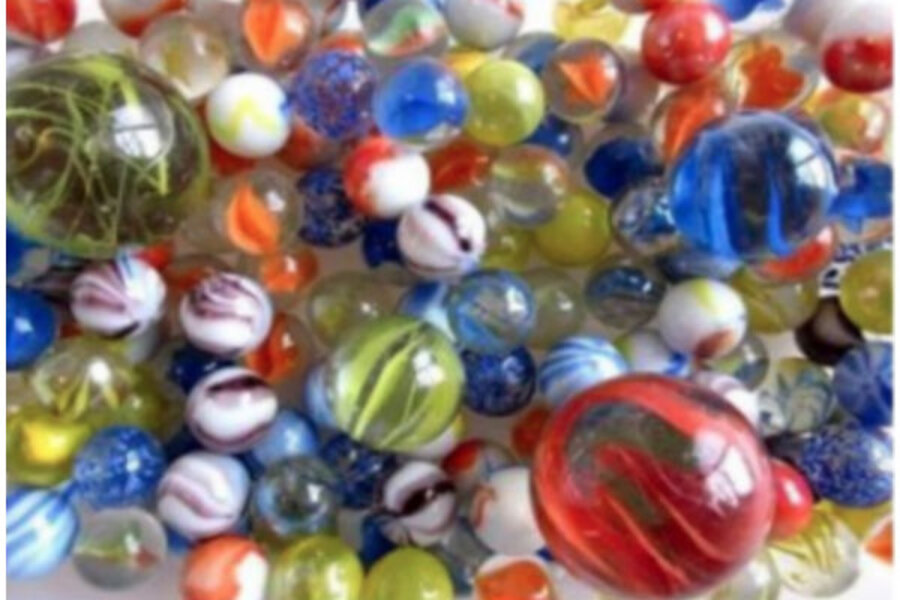Marbles can be called Plainsees, Peewees, Bumblebees, Clouds, Swirlies, Cat’s Eyes, or Beach Balls. They can be made of glass, clay, agate, or steel. They have been used for game play since ancient times in Pakistan, Egypt and Rome, and people of all ages play and compete today. The US National Marbles Tournament has been held on the New Jersey shore since 1922. The British and World Marbles Championship, played annually on Good Friday, dates all the way back to 1588, when two young men duked it out with marbles to determine who would win the hand of a local milkmaiden. While there are many marbles games, Ringer is the classic.
You’ll need:
- 13 standard-sized marbles and one larger shooter marble for each player
- A flat surface
- Sidewalk chalk, or string and tape
Draw a chalk circle at least 3 feet (and as large as 10 feet) in diameter on a sidewalk or driveway, or tape a string circle in place on a carpet. The larger the circle, the more challenging the game. Place the 13 smaller marbles in the center of the circle, in the shape of an X, or scatter them randomly. The first player sits just outside the circle and shoots his or her large marble (or shooter) into the circle, aiming at one or more smaller marbles, with the intent of knocking the smaller marbles outside of the circle, while leaving the shooter inside the circle.
To shoot, place one or more knuckles on the ground and flick the shooter marble with a thumb. If one or more marbles are successfully knocked out of the circle, with the shooter left inside, the player collects the marbles he or she shot outside the circle and shoots again from the place where the shooter landed. If the shooter lands outside the circle as well, the next player is up.
The second and subsequent players do the same. Shooter marbles stay where they landed during each round. Players can also choose to shoot the shooter marbles of others further away from the circle, so that that player will have a more challenging place to shoot from during the next round. Play continues until all the marbles have been knocked out of the circle. Players count their marbles to determine a winner.
You can make your own marbles, the ancient way, using polymer clay. Roll solid or multi-colored pieces of clay into the shapes of marbles and bake according to package directions. Don’t forget to make a few larger shooter marbles.








